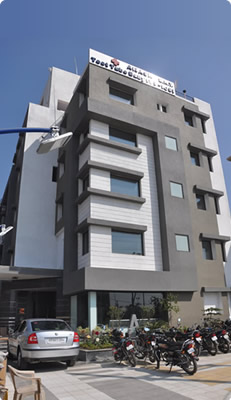- Aakash Hospital
- Fertility Clinic
- Gynecology Division
- ENT Division
- Rhinoplasty
- Contact
- Pollution Control Report
- 2020
- 2021
Copyright©Aakash Hospitals 2022. All Rights Reserved
In IVF (i.e. In-vitro-fertilization) and in ICSI (INTRA CYTOPLASMIC SPERM INJECTION ) the fertilization of the woman’s egg and the sperms is done in the laboratory and the embryo is transferred or put in the uterine cavity.
The eggs are kept in a petridish which has the right media for its nourishment and are kept in the incubator which maintains the pH and critical temperature.
The prepared sperms are used for fertilization. In IVF, the sperms are just placed around the egg. One sperm penetrates the membrane of the oocyte and fertilizes it.
In ICSI, one sperm is picked up and injected into the egg. This is done under high magnification with the use of a micromanipulator. The egg is held with a holding pipette and the sperm is injected using the injecting pipette.
Handling of the gametes is a delicate and high precision work and at our centre it is done by an experienced embryologist. After fertilization, the egg grows to the embryo stage. On d2/3/5 of the pickup the embryo/embryos are transferred or put in the uterine cavity. This is done under Sonography control.
Indications of IVF-ET and ICSI are:
Success of the procedure depends on various factors, most important being the AGE OF THE WOMAN. The number of eggs retrieved in a woman after 34/35 is less and the quality of eggs also is not good. Our success in a young woman is about 40%. Hence if ICSI is indicated in a couple, it makes no sense to keep waiting for a natural conception.
There is a chance of multiple pregnancies especially when multiple embryos are transferred.
The cost of the procedure is a package, which includes the cost of hormonal injections, plastic lab ware, disposable catheters, medicines etc.
